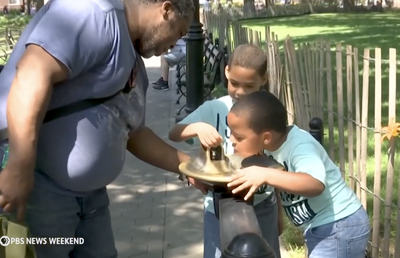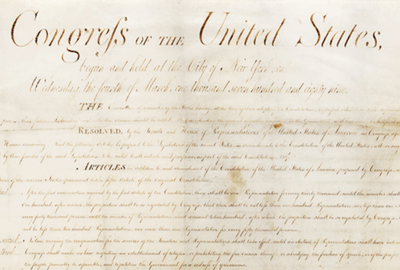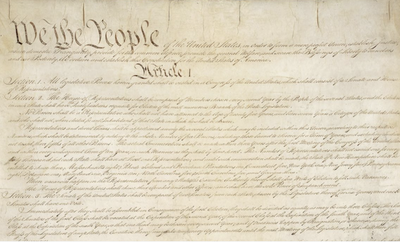By Senior Economics Correspondent Paul Solman
Subject(s)
Economics, Math, Economic HistoryGrade Level
9-12Objective
Help students understand the housing bubble and the current U.S. and global economic crisisOverview
Students will:- Explore what is GDP and GDP growth
- Look at housing starts as a leading economic indicator
- Debate what makes a bubble
- Review the definition of a recession
- Optional: Learn about bubbles in history, including a stock bubble in the early 1700s, in the shares of a company, run by a Scotsman named John Law called the "Mississippi Company"
- Discuss the value of economic forecasting
Procedure
- Start the class by playing the first section of Paul Solman's report on housing .
- Write the rate of GDP growth for the third quarter of 2006 on the blackboard: 1.6%. GDP grew at a "real" annual rate of only 1.6%, July through September. Note that "Real" means after factoring in any inflation.
- Next discuss what GDP means: "GROSS DOMESTIC PRODUCT" is how much the economy produces in a given year. "Gross" here means total (as opposed to "disgusting" or "yucky"). "Domestic" means everything produced inside the country, no matter by whom. (So cars being made by a Japanese firm in Ohio count - minus the parts that were shipped from Japan or elsewhere) "Product" means goods and services - everything that has a price and is recorded as sold that year. The President's salary is included. So is a prison guard's. But a parent's hours caring for a baby - or doing the housework - is not, unless someone is paying for it. Another way of putting it: GDP is the total legal sales of the economy in a 12-month period.
- Next, show how that growth rate compares to previous years: 2005, 2000, the 1990s, the past 100 years. Click here for growth rate chart
- Ask the question: Now that you know this, how would YOU have predicted which way the economy was going?
- Introduce another so-called 'leading economic indicator': HOUSING STARTS. "Down 30%"
-
Note that a 30% drop knocks a full percentage point off of economic growth. How does that work?
-
[The answer: 1% of economic growth is 1% of GDP growth, which was roughly 1.6% of $13 trillion dollars. 1.6% of $13,000,000,000,000 is what? About $200 billion. 1% of that: $2 billion. An average new home cost nearly $300,000 to build in 2006. A 30% drop meant an anticipated 700,000 fewer homes over the course of the year. 700k x $300,000 = roughly $2 billion.]
- Ask whether knowing the Housing Starts information affects the predictions of where the economy was going in Nov. of 2006? You can remind the class of the definition of a recession: two consecutive quarters of the year in which the GDP actually shrinks. A half-year of what's called "negative growth."
- Does the class agree with a deep recession, as Nouriel Roubini was forecasting?
- Play the next part of the video in which economic forecaster Ed Yardeni, a longtime Wall Street bull, was asked to listen to Nouriel Roubini, and respond.
- Ask the class what they think now. Pass out the Shiller Chart Ask: Isn't it true that the higher prices rise, the harder they fall? How many of you remember the Internet stock bubble?
Optional Primary Source Activity
- Hand out a selection from the 19th century classic "Popular Delusions and the Madness of Crowds" by journalist Charles Mackay. It describes a stock bubble in the early 1700s, in the shares of a company, run by a Scotsman named John Law. The "Mississippi Company" was given, by the French government, exclusive trading privileges to the great river Mississippi and the province of Louisiana, then owned by France. "The country was supposed to abound in the precious metals." In addition, early in 1719, the French king also gave the Mississippi Company the exclusive privilege of trading in the East Indies, China, and the South Seas.There is also a William Hogarth image of the "South Sea Bubble" According to an academic study, "The Compagnie share price was around 500 livres in May 1719, rose to nearly 10,000 livres in February 1720, and declined to 500 livres in September 1721." In other words, similar in scope to the American Crash of '29.The Mississippi Company went bankrupt that year and John Law had to flee to England.
- Return to the question: In November of 2006, was the housing bubble bursting, or wasn't it? Play the next segment
- Ask what the class thinks now. Note that Ed Yardeni has, for most of his career, been an economic optimist. He uses the acronym GGBAT to describe the era we live in: the Greatest Global Boom of ALL Times.Nouriel Roubini, by contrast, has been warning of a bubble for years.Do you think that colored their views in 2006?
- Play the rest of the report
- Ask the class if they think economic forecasting is futile or worthwhile and why.
- You may choose to end with a quote from economist John Kenneth Galbraith: "There are two kinds of economist: those who don't know the future, and those who don't know they don't know."





